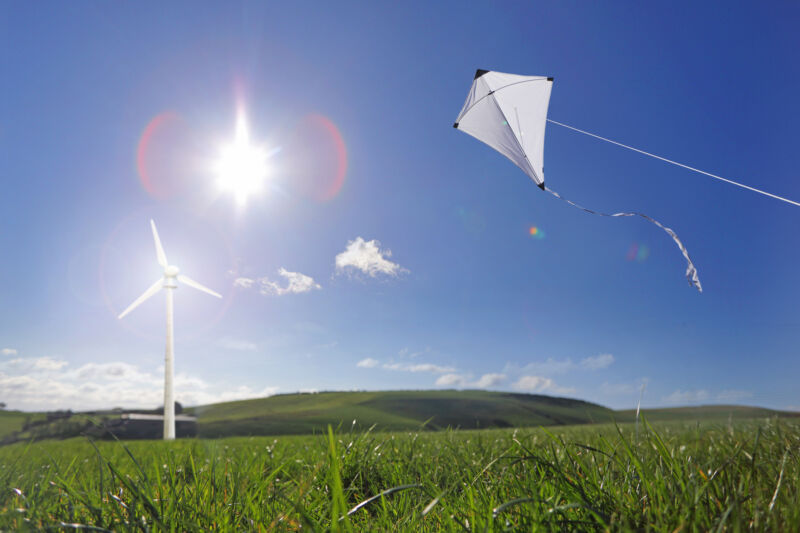
If you can get the kite off the ground and into the air, you are more likely to get a steady breeze to keep it aloft.
The wind power industry is learning from that experience. Companies are using the wind to generate electricity by flying massive kites 200 meters above the ground.
Variations of this kind of kite power are being developed by at least 10 firms in Europe and the United States. Kites could make it possible to build wind farms on land that isn't windy enough for wind turbine towers. Kites could be a better choice for offshore wind power, and one day anchored towers could be replaced.
It is cheaper to manufacture, cheaper to transport, and has higher efficiency, according to the co-CEO and chief technology officer of Kitekraft. He says that the carbon footprint is much smaller.
To become a widespread source of electricity, airborne wind energy needs to overcome a number of technological and commercial hurdles, as Bauer and colleagues describe in an upcoming paper. It will need to demonstrate that it is safe, won't harm wildlife, and won't create intolerable noise and visual disturbances for neighbors.
Kite power is still in its infancy. Most companies are working on relatively small pilot projects, and none have scaled up their technology to the megawatt range that would make them comparable to conventional wind turbines. There are small versions on the market.
SkySails Power was the first company to offer a commercial product. The production model consists of a kite up to 180 square meters. A ground station is contained in a shipping container and is attached to a kite.
The kite makes large, graceful figure eights in the sky and powers a ground-based generator capable of an average output of 80 kilowatts, enough to supply electricity to about 60 average US households. It is similar in scale to many portable industrial diesel generators. The unit can be used in remote locations away from the power grid.
AdvertisementCompanies want to build kites that can generate a lot of power. They envision hundreds of kites on wind farms.
| Source | Maximum power | No. of homes that can be powered |
|---|---|---|
| Existing SkySails PN-14 | 80 kW | 60 |
| Typical wind turbine | 2.75 MW | 2,160 |
| Proposed commercial kite | 3.5 MW | 2,800 |
| Small nuclear reactor | 582 MW | 465,600 |
The ground itself and trees tend to slow down the wind when it is close to the ground. The wind can travel between 3 to 7 kilometers per hour faster at 500 meters than it can at 100 meters. Over the last few decades, there have been a number of proposals for taking advantage of the elevated winds, including suspending them from kites or sending them up on a craft. SkySails is one of the companies that uses steerable, computer-controlled kites that fly patterns in the air to harvest more energy.
Two basic ways to generate electricity are used by airborne wind energy systems. SkySails uses pumping power to run a generator on the ground. As the kite flies across the wind, it pulls against the ground-based end of the tether, and the generator that produces electricity comes off. The cycle starts again after the kite is allowed to float.
The electricity generated by the kite is the other approach. A rigid kite is similar to an airplane wing and supports small wind turbines. When the kite flies, the wind runs the turbine and electricity is sent down the tether to the ground station.
The onboard method allows for dual use of the turbine blades. The kite's blades are powered by a motor and become propellers when it is launched and landed. Once the kite is at the right height, the wind turbine kicks in.
The kite pulls a rotating drum on the ground, which powers a generator when it reaches the end. A rigid kite design is required for onboard generation.